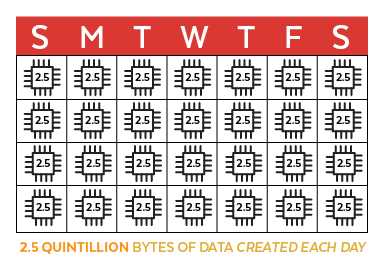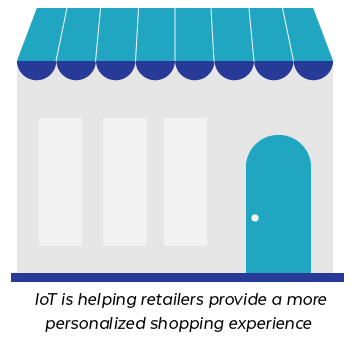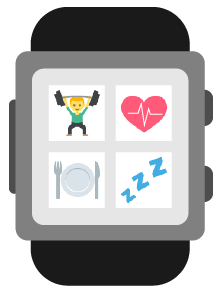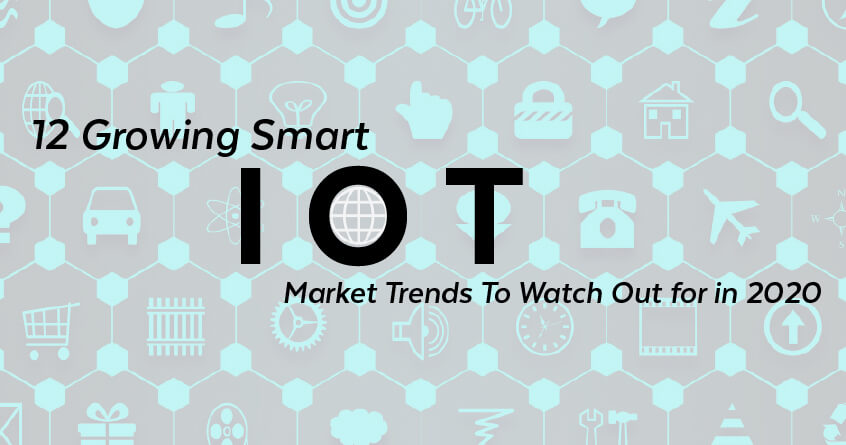Smart IoT market trends show that our world is becoming more connected than ever before. Billions of smart devices are actively being used each day and quintillions of bytes of data is being created.
Every.
Single.
Day.
Here’s the reality: as technology increases, the rate at which our world is changing is only accelerating. In 2020, expect to see some new smart IoT market trends that will shape the way we live, work, and connect.
12 IoT Market Trends to Watch in 2020
1. Data Convergence
More smart devices are in use than ever before, which means data is being generated at a rate mankind has never seen.
According to Forbes, “there are 2.5 quintillion bytes of data created each day at our current pace, but that pace is only accelerating with the growth of the Internet of Things (IoT). Over the last two years alone 90 percent of the data in the world was generated.”
What this means is that the need to not only store data, but the need to make it useful, is becoming increasingly important and a challenge unto itself.
More companies are seeking solutions to data analytics and business intelligence, and this is a trend that will not slow down anytime soon.
2. Energy Resource Management will Become Increasingly Important
Energy resource management and the desire to use data for greater intelligence is what’s driving demand for PoE-powered devices. The ability to replace traditional, inefficient equipment with low-voltage equipment that can do the same thing (and more) is what’s allowing city planners across the world to understand pollution levels, pedestrian traffic, road congestion and even crime levels.
PoE lighting is another perfect example of smart IoT market trends creating a new way of managing resources. The cost of running electrical lines to power traditional lighting is costly and requires electricians — which drives up the costs of a project. PoE lighting is powered using low-voltage electricity, which means cabling installers and contractors can get the job done at a fraction of the cost. The savings continue after installation as well because PoE lighting has lower energy consumption. This is why cities like San Diego have invested so much into becoming a ‘Smart City’.
3. A Personalized Retail Experience
Times aren’t easy for brick-and-mortar retailers. Not only do they face stiffer competition from businesses that have lower overhead; they’re also dealing with consumers who would rather just buy from Amazon. IoT is becoming a useful tool to help retailers provide a more personalized shopping experience, a trend which is expected to continue through 2020. Solid examples of how retailers can use IoT to create a personalized shopping experience that encourages consumers to make a purchase includes app alerts that tell the consumer about a good deal on a specific product they’ve been eyeballing, offering interesting and personalized suggestions of items that compliment an item the consumer as already purchased, providing unique coupons to customers, creating a compelling rewards program, and allowing the consumer to use an app to contact customer service as they walk through a store.
The next big trend on the horizon will be automated checkout — meaning we’ll likely start seeing less cashiers and checkout lines in the future.
4. Smart Homes Will Increase
Consumers are falling in love with how IoT allows them to turn an ordinary home into a smart home. Smart technology is cropping up everywhere, and with devices like Amazon Alexa and Google Assistant, it’s become commonplace to have some level of “smart” technology within a home. The increasing demand will likely drive down costs, and make smart technology within homes just as common as a couch or TV. We’ll also likely see newer condos and housing developments incorporate IoT devices into their communities to attract new tenants and retain the tenants they have.
5. Businesses Will Create Unified Frameworks
A lack of a unified IoT framework has created all sorts of problems for many businesses. This goes back to the convergence of data. More smart devices means more data — which means a greater need for connectivity and the need for smart platforms that combine and integrate IoT devices, processes and applications to meet specific needs.
6. Increased Demand for IoT Devices
The use of electronic devices is on the move. Consumers want to be connected all the time. It’s estimated by the start of 2020 an excess of 50 billion smart electronic devices will be in active use. People want automation, personalization and ease of use. These core fundamentals are what drive the success of companies like Google, Amazon and Netflix. As IoT devices increase, so will connectivity between devices — all in the name of personalization.
7. Blockchain will Become Bigger and Better in 2020
The distributed nature of blockchain systems means that vulnerabilities are exponentially harder to produce because the system is not controlled by one business or entity. There is no central point of attack. Instead, systems built on blockchain technology are distributed. Millions of connected devices connected through a decentralized system would make it nearly impossible for a hacker to launch a successful cyber security attack.
8. Shifts in Cybersecurity
Cybersecurity is a pressing concern in the world of IoT. Privacy advocates worry that more devices connected to the internet means more entry points for malicious cyber groups, whether state-sponsored or criminal. Smart platform providers will have to pay special attention to cybersecurity practices as the platforms that aggregate data and connect and control devices will be targeted.
9. Improved Security Training
One of the many things IoT forecasters predict being a big thing during 2020 is security and security training. While this might not seem like it pertains to marketing, if you look a little deeper, you’ll see it does. When done correctly, the training allows you to identify and avert potential security threats as you create new marketing plans and apps. The improved security training will have some upfront costs, but they’ll be recouped when you’re able to assure your customers that you’ve made the IoT safe for them. Improved IoT security helps build trust in your brand.
10. Expect Improved AI and Data Analytics
One of the biggest trends forecasters anticipate in 2020 and following years is the steady improvement of both AI and data analytics technology. Business intelligence has long been the lead domino for explosive growth. Google and Amazon are perfect examples. The next trend we’ll see is the democratization of data analytics, allowing individuals to have tools that gives them insights into their own health, lifestyle and household.
11. Healthcare and Medical Devices
We’ve went from smart devices to smart buildings to smart cities. While we’ll likely keep expanding outward, the next big thing will be IoT in healthcare and apps that allow individuals unparalleled insights into how their body is operating at any moment. This data will be captured for analysis and it’s quite probable that in the very near future anyone will be able to optimize their diet, sleep patterns and fitness based on real-time data.
12. Cities Starting to Take Advantage of the Internet of Things
City governments are interested in two things. Attracting additional tax paying residents to their jurisdiction and saving money. IoT allows them to do both which is why you can expect to see an increase in the cities using sensors, PoE lighting and smart platforms to connect it all. There are over a hundred different ways that cities and communities can use IoT. It can help improve data exchanges, provide increased levels of security for government buildings/offices, improve parking options, improve traffic flow, alert to residents of important events, etc. There is seemingly no limit to the number of ways the IoT can help turn regular cities into smart cities.
